A New Leash on Life in Cambria
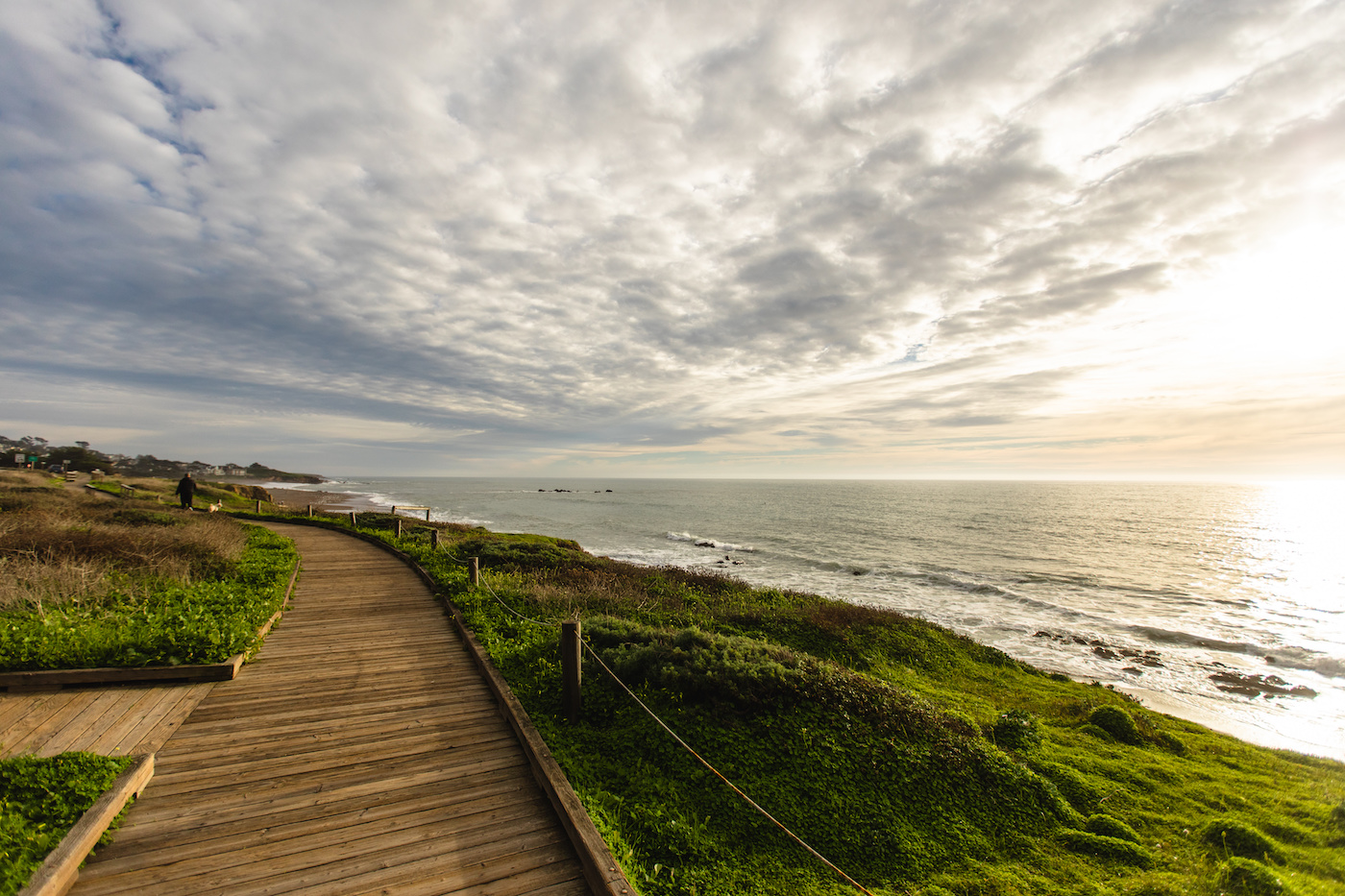
Like many of us as the Year of Plague subsides, my wife, Merry, and I were dying to take a trip somewhere . . . anywhere. But even vaccinated, we weren’t quite ready to board a 5,000-passenger cruise ship in Europe. A trip near home sounded pretty good, though. Baby steps.
What’s more, like 23 million other Americans in 2020, we’d adopted a pet. Our new dog, Davie, quickly earned an affectionate nickname: “The World’s Laziest Border Collie.” On a walk, if we pause for 20 seconds, he’s lying down. Forty seconds, and he’s out like a light. He joined the family unit alongside our loveable black micro-poodle, Diggity Dog. We wanted to take them along.
Merry and I pondered: Is there is a close-to-home travel destination that’s also dog friendly? Then we remembered an old favorite up the coast, Cambria, about two hours north of Montecito. This village of only 6,000 people has a dual aspect, with forest behind and a pristine, rugged shoreline in front.
We stayed at a dog-friendly inn, met locals at the dog park, took long doggie walks by the ocean, and ate in a restaurant garden with the dogs snoozing at our feet.
A Wind-Swept Arrival
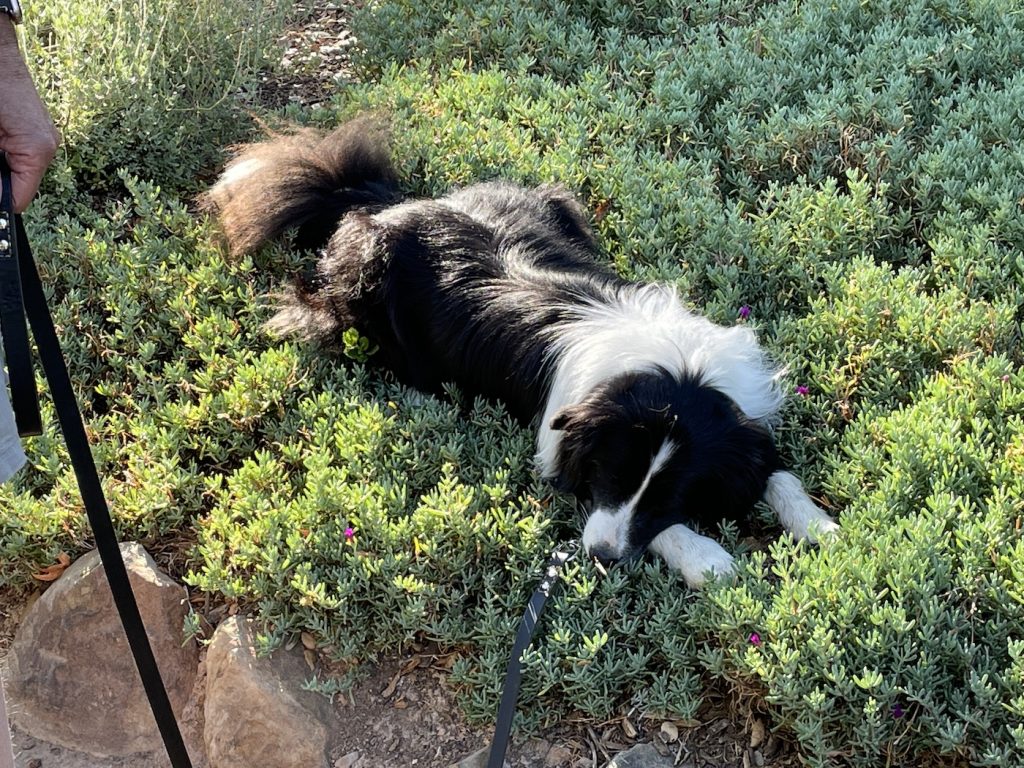
The afternoon we arrived at our lodgings on Moonstone Beach, the wind was blowing hard. In fact, as Merry and I and the canine crew crossed the road to stroll on the bluff above the ocean, a stiff gust whirled my hair into a fright wig. For a moment it looked as if Diggity might get blown into the sky like Toto leaving Kansas.
But before us lay a rare sight, an endless seascape painted in deep marine blue with scudding whitecaps and wheeling gulls. We scanned the kelp beds, hoping to spot some Cambria locals: playful sea otters. They like to rest on the kelp as they crack shellfish on their bellies or sleep. (Fun furry fact: Otters usually sleep in kelp strands to keep from drifting apart, but sometimes they hold hands instead. Aww.)
The beach below us was named for the semiprecious moonstones that visitors search for, although what they discover here is actually chalcedony. (Real moonstones are feldspar.) Sea glass, eccentrically shaped driftwood, water-polished agate and tide-tumbled jasper — all these can be found in the sand. Other finds wait in the tidepools that dot the rocky shore. It was high tide, though, so we’d have to wait to look for crabs, urchins, and sea stars.
Instead, I popped into town — well, it’s two towns. Cambria is split into an older eastern section, which has buildings from the 19th century, and a newer, slicker western part. That’s where I picked up a pizza to go, with salads and bread pudding, to eat in our room. It was all good, except for the food. (Merry congratulated me on finding the worst restaurant in Cambria.) Oh well, we did have a classic sunset view through our glass doors facing the ocean.
I erected Davie’s folding nylon crate (Amazon Basics), and Diggity plopped on the bed on his favorite red blanket. (Tip: Bring along familiar things from home, so your dogs feel comfortable.)
All of us fell asleep to the soft music of waves hitting the shore.
A Trip to Burton Drive
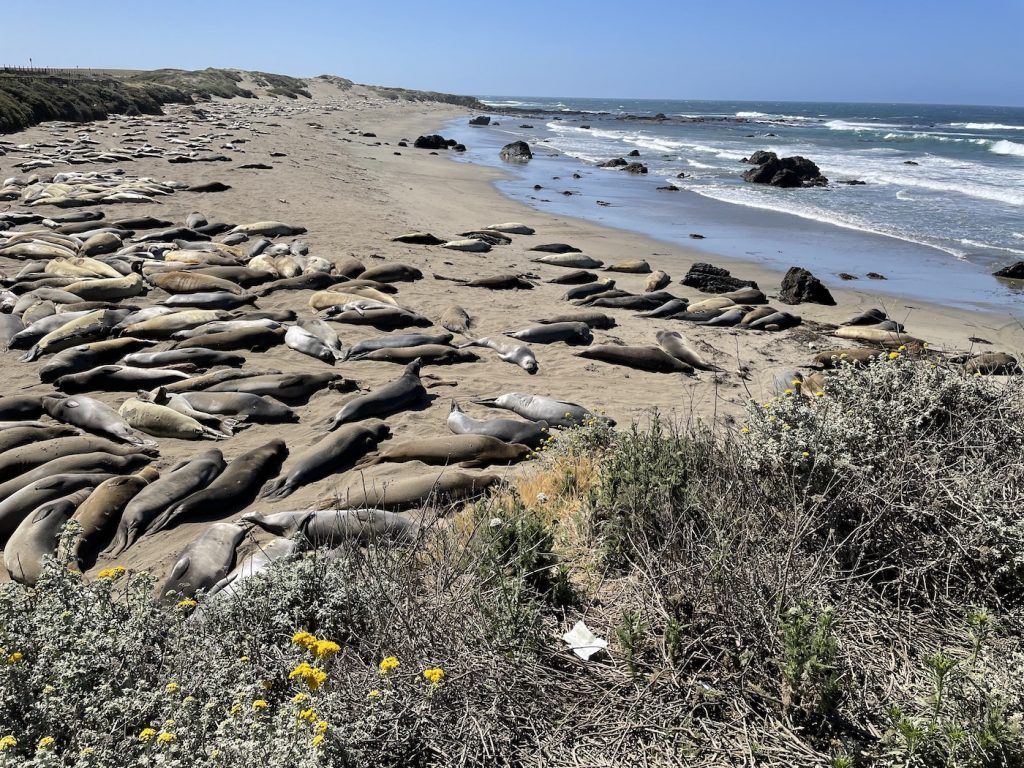
Before breakfast I walked Davie on the bluff, taking the boardwalk that runs for about a mile and a half. Pouring over the hills behind us, low morning sunshine struck lines of breaking waves, transforming white foam into pure light, radiant against a green sea.
Merry and I had pre-ordered breakfast for delivery to our quarters, and it arrived right on time, complete with utensils: a bagel with smoked salmon for her, and scrambled eggs and potatoes for me, all good. (Davie and Diggity ate from bowls on the floor like animals.)
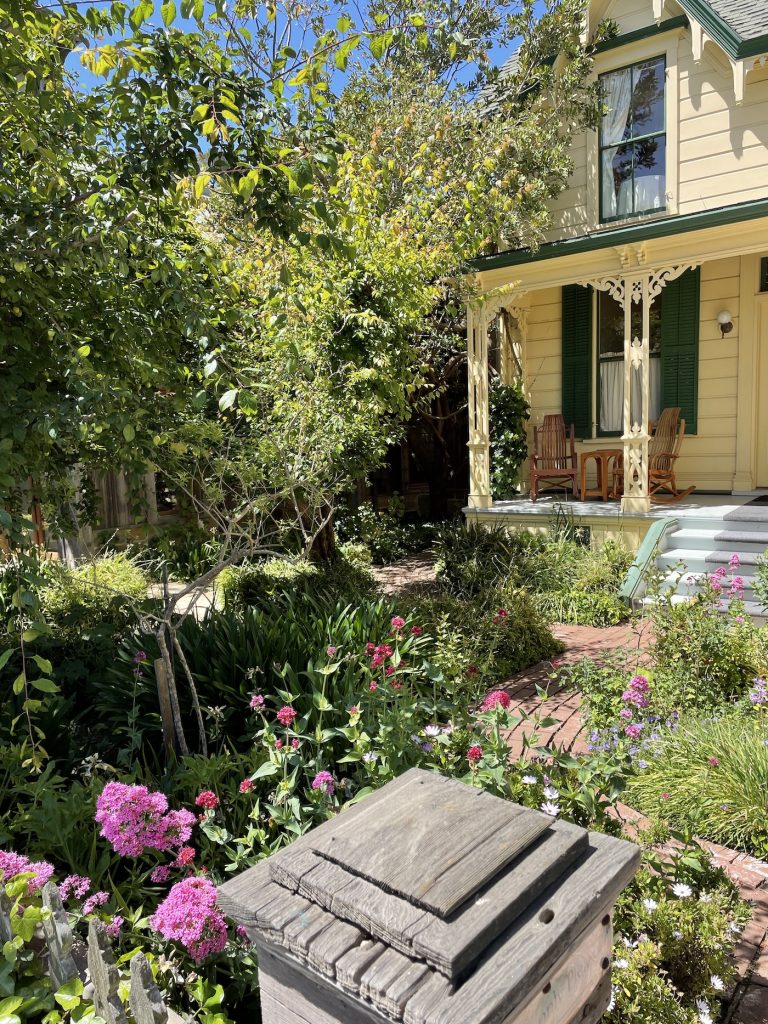
The pooches seemed ready for a romp, so we piled in the car and headed to town. From past visits, Merry’s and my favorite street in the old part of town is Burton Drive, just off Main. Cambria’s mild climate, with temperatures in the 60s and 70s year-round, makes for beautiful, soft gardens. Along Burton Drive, sea lavender cascades over weathered picket fences and wild roses climb into old trees.
We admired the Squibb House, an 1877 Victorian built by a Civil War veteran who became principal of Cambria’s original school. (The Squibbs were known for their sense of civic duty, and today “squibbing” is a local term for picking up trash to beautify the town.) The house, painted creamy yellow with green trim, now operates as a bed-and-breakfast inn.
The shop next door (called, for some reason, The Shop Next Door) sells handmade Amish furniture and vintage decorative pieces. On the outside, lettering in faded paint says, “Grain Bought and Sol.” Proprietor Bruce Black explained that the missing letter “d” was lopped off years ago when a previous owner widened the door to use the building as a repair garage for Model A Fords.
The town dates to the 1860s, when mercury mining boomed. For building houses, a sawmill turned out rough-hewn boards with slabs of bark still intact. The settlement was duly dubbed Slabtown — and later renamed (for obvious reasons) with the more distinguished title Cambria, the Latin word for Wales. (A Welsh carpenter lobbied for the name.)
It was lunchtime, so we walked to Robin’s, a longtime favorite. Guiding our leashed companions, we took a table in the garden. Bowers of flowers — pink rose trees and trumpet vines — surrounded us. We tucked into fish tacos (me) and a spring salad (Merry), and a bowl of water was thoughtfully provided for the two diners on the floor.
On the street after lunch, we saw plenty of strollers with dogs, and our goodwill ambassadors struck up several furry friendships. This inspired us to go for our first-ever visit to a dog park.
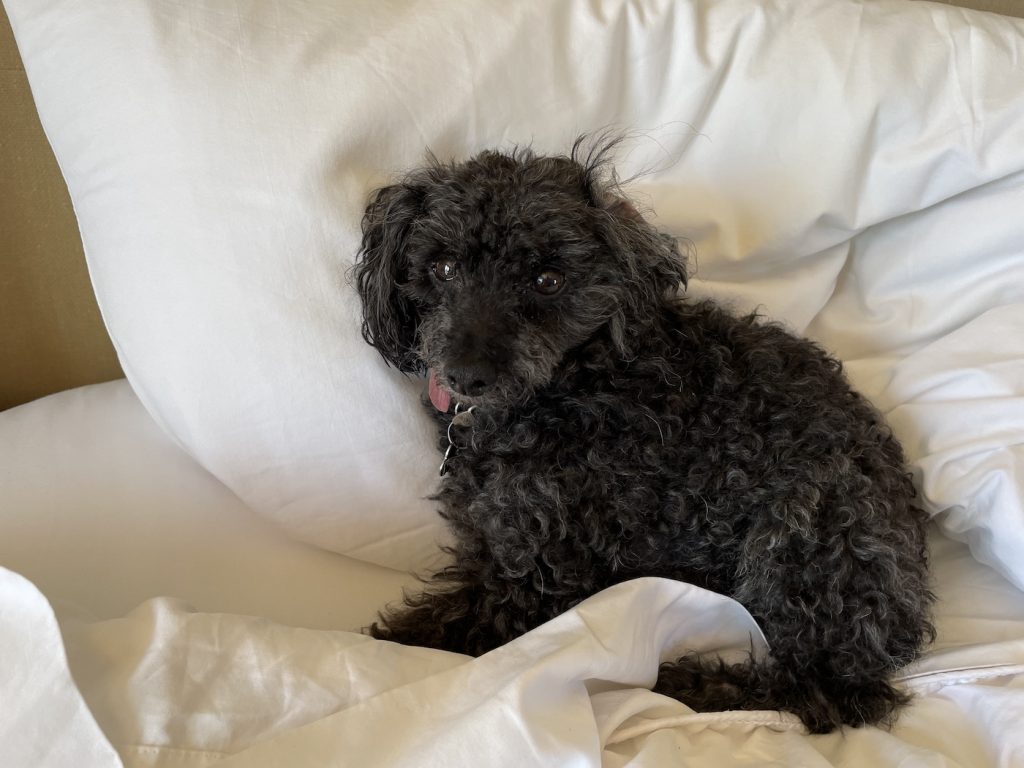
Driving to the end of Rodeo Grounds Road, we found a fenced, one-acre park set in a broad green vale edged with forest. The facilities were divided into two sections, apparently for big and small dogs, but everyone and their four-legged pals had headed for the larger area. It had water for pooches, a bit of shade for people, and a basket of tennis balls in case you forgot to bring one.
Davie couldn’t care less about chasing a ball, and Diggity can’t get his mouth around one, so we watched a young guy who’d brought a sort of jai alai sling made of plastic and was flinging balls 50 feet out for his Pitbull-Lab mix named Draco. (An hour later, the strapping Draco hadn’t slowed down.)
A jovial man introduced his Australian Shepherd, nicknamed Blockade because at home he always stands in front of you and blocks the way. “He’s only aware of where his head is,” the man explained, “the rest of his body, not so much.” The dog’s other nickname: “Bob Barker.”
Sitting on plastic chairs, we chatted and laughed while our dogs played. Locals filled us in on the perennial fight to keep Cambria small and unspoiled. We all told shaggy dog stories, and as the afternoon light faded, they left us with an invitation. “See you again!”
Traveling with dogs is a pleasure for many reasons, especially this one: Dogs are friendship ambassadors who often lead you into the heart of local life.
Thanks, Davie and Diggity. Good boys! Have some treats!
IF YOU GO
GETTING THERE: Cambria is 130 miles north of Montecito, a 2.5-hour drive via U.S. 101 and CA 1.
VISITOR INFORMATION: visit cambriaca.com or 805-927-3624; the visitor center is at 767 Main Street.
DOG FRIENDLY: visitcambriaca.com/2018/02/09/welcome-four-legged-friends for links to pet-friendly inns, restaurants, services.
MOONSTONE BEACH LODGINGS: Pacifica Hotels (www.pacificahotels.com/hotels) has five inns that are pet friendly (with varying extra fees): the Pelican Inn (where we stayed), Cambria Landing, El Colibri, Fogcatcher, and Oceanpoint Ranch. Meanwhile, White Water (whitewatercambria.com) is a designer inn with Scandinavian and Californian beach house touches; $100 fee per dog.
WHERE TO EAT: See the link under “Dog Friendly,” above. Also, Robin’s (www.robinsrestaurant.com, 4095 Burton Dr., 805-927-5007) occupies an old adobe; specialties include salmon bisque, wok-flashed pasta with farmers market vegetables, and Thai chicken, as well as a dog-friendly garden.
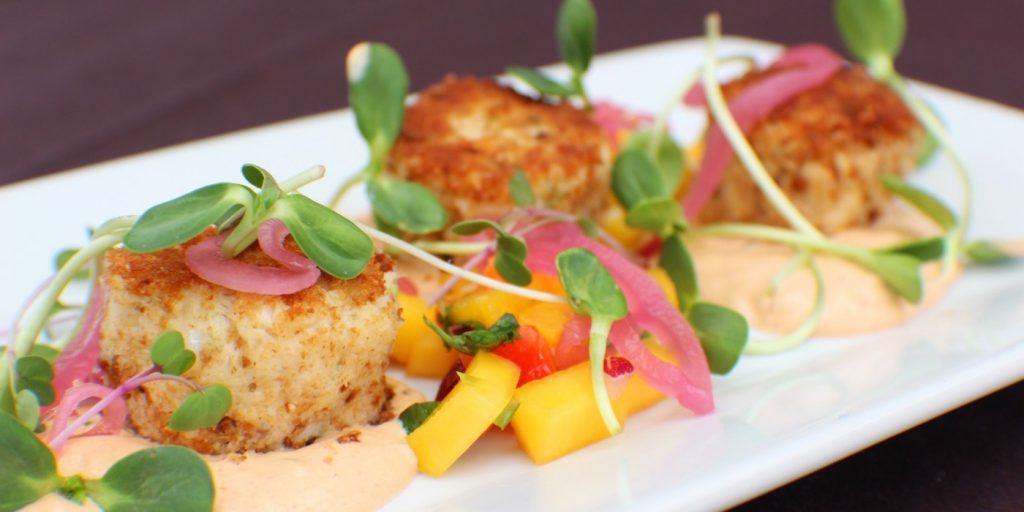
WHAT TO DO: Keep Rover in the car for these activities, including Elephant Seal Viewpoint (13 miles north of Cambria on Hwy. 1; www.elephantseal.org). These huge sea mammals haul out on the beach to give birth and breed (December-March) and molt (April-August). Males weigh up to 5,000 pounds; we watched them grunt, spar, and flip sand. Docents in blue jackets answer questions. Also nearby is Hearst Castle (9 miles north of Cambria, hearstcastle.org), but it remains closed due to the pandemic; on reopening, reservations will be required.







You must be logged in to post a comment.